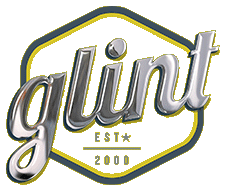An orange background, a large, white, slightly diagonal line with a curve at the end, and three short words created one of the most iconic logos to date. This brand has a strong following, spurred many to action and has driven product interest and sales, but is this art or science? Whether advertising is considered art is one of the longest running debates in the advertising industry. Articles date back decades dissecting, analyzing and discussing whether advertising is art, and now the debate is even more robust as the evolution of data collection and analytical tools has led to an even more rigorous and disciplined approach to advertising. Many influential people in the advertising world have weighed in, lending their opinion to the discussion.
The debate over advertising being considered art started in the earliest stages of advertising history. Advertising guru, William Bernbach once stated, “Advertising is fundamentally persuasion and persuasion happens to be not a science, but an art.” Not surprisingly, Bernbach’s statement seems to be a controversial one. About half of the advertising industry believes that being able to persuade someone is a special gift not available to just anyone, while the other half believe persuasion is a trick that is teachable. This argument for advertising as an art form relies on the notion that an advertisement must be compelling enough to motivate a consumer to purchase a product or service.
In support of advertising as science, many advertising professionals point out that advertising creation and development is driven by specific brand and product goals, not purely from creative vision. Not having complete creative freedom on the advertising design coupled with the requirement to deliver brand and product goals limits creativity and expression thus making advertising more of a science. One of the newer arguments on the side of science is about evolving capabilities in tracking and analytics through just about every step of the advertising process. The wealth of data, tracking, and analytics influencing the creativity and development of advertising further drives the perception and belief that advertising is science. A true artist has a vision or a statement to make unencumbered with spreadsheets, consumer panels, and Nielson ratings. Barring the price for their artwork, artists don’t track the performance of their art by analyzing consumer feedback, measuring viewer impact or evaluating viewer actions. As the famous writer, Stephen Leacock once said “Advertising: the science of arresting the human intelligence long enough to get money from it.”
While persuasion and message control are two of the bigger concepts or themes in the art or science debate, a couple of other interesting thoughts have emerged.
Supporters of advertising as art rightfully point out how old advertising is a common home decorating trend. Many ads from the 40s, 50s, and 60s get incorporated into home décor much like a piece of art. Even though a client pays for advertising, art is none-the-less created. Another argument on the side of art centers on the placement of ads in museums. If advertising is not art, then why do ads appear in such a prominent museum as the Smithsonian’s National Museum of American History? This museum is the leading source of displays depicting American culture, and most everyone in the field agrees that advertising belongs there. Additionally, other art museums will occasionally have special exhibits featuring advertising through the years; but rarely will science museums display advertising whether influential or not.
One of the additional arguments supporting advertising as science revolves around advertising as a business enterprise. The purpose of advertising is to sell a product or service and make a profit. This basic premise constitutes a business transaction between agency and client, and between agency and client and consumer. While artists certainly sell their artwork and may even be commissioned for a project, it is the multi-level relationship between client, agency, and consumer with the sole intent of the agency creating ads for the client to earn money, and progressively more money over time, that constitutes advertising as science. In conjunction with this business relationship, evolving tracking and analytical capabilities used to drive ever more efficient advertising connotes a science-based approach. Creating and utilizing tracking and analytics pollutes the organic process that is true art.
The debate over advertising as art or science is almost as old as the field itself. New developments and new data and analytic capabilities only add additional fuel to the debate. Both art and science supporters have an abundance of reasons and rationale for their claim. For many, though, the best advertising is a combination that leverages the best of both approaches; the guidance of science – data, analytics, goals, and a keen eye on profitability; combined with the creativity, inspiration and engagement of impactful art. There are a lot of opinions out there, what’s yours? Do you think advertising is art? Science? Or, is it a little bit of both?
If you have questions about branding and how your business can build and sustain a true competitive advantage, reach out to Glint at www.glintadv.com or give us a call at 817-616-0320. From large-scale real estate developments to hospitals, retail stores, credit unions and more, Glint has been helping clients define, refine and hone their brand strategy and imagery for over 16 years.






